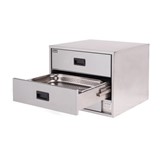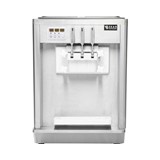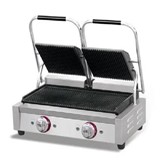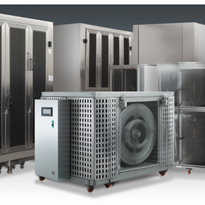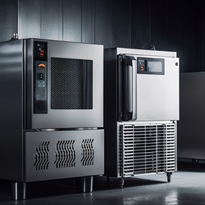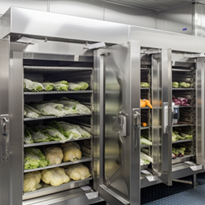Proper maintenance and care are vital to ensure the longevity and optimal performance of your blast chiller. Here are some essential tips to help you maintain and care for your blast chiller:
1. Regular Cleaning
Regular cleaning is crucial to keep your blast chiller in optimal condition. Follow these cleaning tips:
- Interior Cleaning: Clean the interior of the blast chiller regularly using a mild detergent and warm water. Pay attention to removing any food particles, spills, or residues that may accumulate.
- Exterior Cleaning: Wipe down the exterior surfaces with a damp cloth and mild detergent to remove dirt and grease. Avoid using abrasive cleaners that may damage the finish.
- Door Gasket Cleaning: Clean the door gasket with warm water and mild soap. Ensure it is free from debris and properly seal the door to maintain energy efficiency.
- Condenser Coil Cleaning: Check the condenser coils regularly and clean them according to the manufacturer's instructions. Dust and debris accumulation can impair cooling efficiency.
- Fan Cleaning: Clean the fans to ensure proper airflow and prevent dust buildup that can hinder the cooling performance. Refer to the manufacturer's guidelines for cleaning instructions.
2. Temperature and Defrosting
Maintaining the correct temperature and defrosting your blast chiller are essential for its efficient operation:
- Temperature Monitoring: Regularly monitor the temperature of your blast chiller to ensure it stays within the safe operating range. Use a calibrated thermometer for accurate readings.
- Defrosting: Follow the recommended defrosting schedule for your blast chiller. Defrosting removes ice buildup and maintains the chiller's efficiency. Ensure the unit is powered off and unplugged during the defrosting process.
3. Door Seal and Hinges
Proper care of the door seal and hinges is essential for maintaining the efficiency of your blast chiller:
- Door Seal Inspection: Regularly inspect the door seal for any signs of wear, cracks, or damage. Replace the seal if it is compromised to maintain proper sealing and prevent temperature leaks.
- Hinge Lubrication: Lubricate the door hinges as per the manufacturer's instructions to ensure smooth operation and prevent squeaking or sticking.
4. Scheduled Maintenance and Servicing
Regular servicing and maintenance by a qualified technician are essential to keep your blast chiller in optimal condition:
- Scheduled Maintenance: Follow the manufacturer's recommended maintenance schedule. Arrange for periodic inspections, cleaning, and servicing by a qualified technician.
- Component Check: During maintenance visits, have the technician check critical components such as fans, compressors, electrical connections, and refrigerant levels to ensure everything is functioning correctly.
5. Record Keeping and Documentation
Maintain proper records and documentation for your blast chiller:
- Maintenance Records: Keep a log of all maintenance activities, repairs, and services performed on your blast chiller. This documentation can help track the history of the equipment and assist in warranty claims if necessary.
By following these maintenance and care tips, you can prolong the lifespan of your blast chiller and ensure it continues to operate efficiently. Regular cleaning, temperature monitoring, door seal maintenance, scheduled servicing, and proper documentation are key to maintaining the performance and reliability of your blast chiller.
Importance of Regular Maintenance to Ensure Optimal Performance and Longevity
Regular maintenance is crucial for the optimal performance and longevity of your blast chiller. Here are some key reasons why regular maintenance is important:
1. Ensures Optimal Performance
Regular maintenance helps ensure that your blast chiller operates at its peak performance. By adhering to a maintenance schedule, you can address potential issues before they escalate and impact the chiller's efficiency. Routine inspections, cleaning, and servicing help maintain components, such as fans, condenser coils, and electrical connections, in optimal condition. This promotes proper airflow, efficient cooling, and reliable operation.
2. Maximizes Energy Efficiency
A well-maintained blast chiller is more energy-efficient, resulting in cost savings and reduced environmental impact. Regular cleaning of components, such as condenser coils and fans, helps remove dust and debris that can hinder heat transfer and airflow. This allows the chiller to operate efficiently, reducing energy consumption and minimizing utility costs.
3. Prevents Breakdowns and Costly Repairs
Regular maintenance helps identify and address potential issues before they lead to costly breakdowns. Through routine inspections, technicians can detect signs of wear, leaks, or malfunctioning components. By addressing these problems early on, you can prevent major breakdowns and avoid expensive repairs or replacements. Investing in preventive maintenance is more cost-effective than dealing with emergency repairs and prolonged equipment downtime.
4. Enhances Food Safety and Quality
Maintaining food safety and preserving food quality are critical in the food industry. A well-maintained blast chiller ensures that food is rapidly cooled to safe temperatures, reducing the risk of bacterial growth and foodborne illnesses. Regular maintenance helps verify that the chiller is operating within the correct temperature range and that temperature controls are accurate. This safeguards the quality and integrity of your food products, preserving taste, texture, and nutritional value.
5. Extends Equipment Lifespan
Proper maintenance significantly extends the lifespan of your blast chiller. By addressing minor issues and maintaining components in good condition, you can prevent premature wear and damage. Regular servicing and cleaning help minimize the effects of wear and tear, corrosion, and the buildup of contaminants. This prolongs the life of your blast chiller, ensuring a better return on your investment.
6. Compliance with Safety and Health Regulations
Regular maintenance is essential for compliance with safety and health regulations. By properly maintaining your blast chiller, you ensure that it meets the required standards and regulations set by relevant authorities. This helps you avoid potential penalties or legal issues and provides peace of mind knowing that your operation is in compliance with industry standards.
Step-by-Step Guide on Cleaning and Sanitizing the Blast Chiller
Proper cleaning and sanitization are essential for maintaining hygiene and food safety in your blast chiller. Follow this step-by-step guide to ensure thorough cleaning and sanitization:
Step 1: Preparation
- Safety First: Before starting the cleaning process, ensure your safety by wearing protective gloves and eye protection.
- Power Off: Turn off the power supply to the blast chiller and unplug it from the electrical outlet to prevent accidents during the cleaning process.
- Empty and Remove Contents: Remove all food items, shelves, and trays from the blast chiller. Discard any spoiled or expired food.
Step 2: Cleaning the Interior
- Remove Debris: Start by removing loose debris, food particles, and spills from the interior of the blast chiller. Use a brush or soft cloth to wipe away any visible dirt or residue.
- Prepare Cleaning Solution: Prepare a cleaning solution by mixing warm water with a mild detergent or a manufacturer-approved cleaning agent. Follow the recommended dilution ratio mentioned on the cleaning product.
- Clean Surfaces: Dip a clean cloth or sponge into the cleaning solution and thoroughly wipe down all interior surfaces, including walls, shelves, and the door. Pay extra attention to corners, seams, and hard-to-reach areas.
- Rinse with Clean Water: After cleaning, rinse all surfaces with clean water to remove any remaining cleaning solution or detergent residue. Use a separate cloth or sponge soaked in clean water for this step.
- Dry Thoroughly: Use clean, dry cloths or towels to thoroughly dry the interior surfaces. Ensure there is no moisture left, as it can promote the growth of bacteria or cause rusting.
Step 3: Cleaning the Exterior
- Wipe Down: Use a damp cloth or sponge and the same cleaning solution used for the interior to wipe down the exterior surfaces of the blast chiller. Pay attention to handles, control panels, and any visible dirt or stains.
- Rinse and Dry: Rinse the exterior surfaces with clean water to remove any cleaning solution residue. Dry the exterior thoroughly with a clean, dry cloth.
Step 4: Sanitization
- Prepare Sanitizing Solution: Prepare a sanitizing solution by mixing warm water with a food-grade sanitizer approved for use in food service establishments. Follow the manufacturer's instructions for the correct dilution ratio.
- Sanitize Interior Surfaces: Use a clean cloth or sponge soaked in the sanitizing solution to wipe down all interior surfaces of the blast chiller. Ensure all surfaces are thoroughly coated with the sanitizer.
- Allow Contact Time: Follow the recommended contact time mentioned on the sanitizer's instructions. This allows the sanitizer to effectively kill any remaining bacteria or pathogens.
- Rinse and Dry: After the contact time has passed, rinse the interior surfaces with clean water to remove the sanitizing solution. Dry the surfaces thoroughly with a clean, dry cloth.
Step 5: Reassemble and Final Checks
- Reassemble: Place the cleaned and sanitized shelves and trays back into the blast chiller, ensuring they are properly positioned.
- Check Seals and Hinges: Inspect the door seals and hinges for any damage or wear. Replace them if necessary to maintain proper sealing and efficient operation.
- Power On: Plug in the blast chiller and turn on the power supply. Allow it to cool down to the desired temperature before loading it with food.
Tips for Handling and Storing Food Items in the Blast Chiller
Proper handling and storage of food items in the blast chiller are essential to ensure food safety and maintain the quality of your products. Follow these tips to handle and store food items effectively in the blast chiller:
1. Preparing Food for Chilling
- Temperature Control: Ensure that cooked food is promptly chilled to a safe temperature. The blast chiller should rapidly cool down the food from the cooking temperature to a safe storage temperature within the recommended time frame.
- Portioning: Divide larger food items into smaller portions before placing them in the blast chiller. Smaller portions cool more quickly and evenly, ensuring optimal chilling efficiency.
- Shallow Containers: Use shallow containers or trays when placing food in the blast chiller. This allows for better heat transfer and rapid cooling.
- Cover or Wrap: Cover or wrap food items properly before placing them in the blast chiller to prevent cross-contamination and maintain food quality.
2. Proper Placement in the Blast Chiller
- Spacing: Leave sufficient space between food containers or trays in the blast chiller to allow for proper airflow and even cooling. Overcrowding can hinder the chilling process and compromise food safety.
- Avoid Blocking Vents: Ensure that the vents and air circulation paths in the blast chiller are not obstructed by food containers or trays. This promotes efficient cooling and prevents temperature inconsistencies.
- Organize by Temperature: Group food items with similar chilling requirements together. Place items that need to be chilled to the same temperature in the same area of the blast chiller. This helps maintain uniform cooling and prevents cross-contamination.
3. Monitoring and Storing Chilled Food
- Temperature Monitoring: Regularly monitor the temperature of the blast chiller to ensure it remains within the safe storage range. Use a calibrated thermometer to verify the temperature of the food items as well.
- Proper Packaging: Once the food items have reached the desired storage temperature, transfer them to appropriate storage containers or bags. Seal them tightly to maintain freshness and prevent contamination.
- Labeling and Dating: Label each container or bag with the contents and the date of chilling. This helps with proper inventory management and ensures that chilled items are used within the recommended timeframes.
- Storage Duration: Follow food safety guidelines and regulations regarding the maximum storage duration for different food items. Regularly rotate food items to ensure older items are used first, reducing the risk of spoilage or waste.
- Storage Organization: Arrange the stored food items in the blast chiller in an organized manner. Keep raw and cooked foods separate to prevent cross-contamination. Store items in a way that allows for easy access and proper airflow.
Common Troubleshooting Techniques for Resolving Issues with the Blast Chiller
Encountering issues with your blast chiller can disrupt your operations. Here are some common troubleshooting techniques to help you resolve common problems:
1. Insufficient Cooling or Temperature Fluctuations
- Check Airflow: Ensure that the vents and air circulation paths are not blocked by food containers or other objects. Poor airflow can impede cooling efficiency.
- Clean Condenser Coils: Dirty or clogged condenser coils can hinder heat transfer. Regularly clean them to maintain optimal cooling performance.
- Verify Temperature Settings: Check that the blast chiller is set to the correct temperature and that the control panel is functioning properly.
- Inspect Gaskets: Damaged or worn door gaskets can lead to temperature fluctuations. Replace them if necessary to maintain proper sealing.
2. Excessive Condensation or Water Leakage
- Check Drainage System: Ensure that the drainage system is clear of obstructions and functioning properly. Clean the drain pan and drain line regularly to prevent clogs.
- Inspect Door Seals: Damaged or loose door seals can allow warm air to enter the blast chiller, leading to condensation. Replace the seals if necessary.
- Verify Door Closure: Ensure that the door is fully closed and latches securely. An improperly closed door can cause air leaks and moisture buildup.
3. Unusual Noises or Vibrations
- Level the Chiller: Ensure that the blast chiller is properly leveled using adjustable feet or adjusters. Uneven surfaces can cause vibrations and noise during operation.
- Inspect Compressor: Check the compressor for any loose or damaged components. If you notice irregular noises coming from the compressor, contact a qualified technician for inspection.
4. Electrical Issues or Power Failure
- Check Power Supply: Verify that the blast chiller is properly connected to a functioning power source. Ensure that the electrical outlet and circuit breaker are in good condition.
- Reset Circuit Breaker: If the blast chiller loses power, check the circuit breaker or fuse box. Reset any tripped breakers or replace blown fuses.
5. Error Codes or Malfunctioning Control Panel
- Refer to the Manual: Consult the blast chiller's user manual to identify the meaning of error codes or troubleshooting instructions specific to your model.
- Restart the Chiller: Turn off the power, wait for a few minutes, and then turn it back on. This can reset the control panel and clear minor malfunctions.
- Contact Technical Support: If the issue persists or if you are unsure about performing any troubleshooting steps, contact the manufacturer's technical support or a qualified technician for assistance.
Expert Recommendations for Scheduled Inspections and Servicing to Avoid Breakdowns
Regular inspections and servicing are crucial for maintaining the optimal performance of your blast chiller and avoiding unexpected breakdowns. Here are some expert recommendations for scheduled inspections and servicing:
1. Follow Manufacturer's Guidelines
- Read the Manual: Familiarize yourself with the manufacturer's guidelines and recommendations for scheduled inspections and servicing. The manual provides valuable information specific to your blast chiller model.
- Adhere to Maintenance Schedule: Follow the manufacturer's recommended maintenance schedule for your blast chiller. This includes routine inspections, cleaning, and servicing intervals. Stick to the suggested timelines to ensure your chiller operates at its best.
2. Hire Qualified Technicians
- Engage Professional Technicians: Seek the services of qualified technicians who specialize in blast chiller maintenance. They possess the necessary knowledge, skills, and experience to perform thorough inspections and servicing.
- Manufacturer-Authorized Technicians: Whenever possible, choose technicians who are authorized by the manufacturer. They are trained to work specifically on the brand and can provide expert recommendations and genuine replacement parts.
3. Inspections and Cleaning
- Routine Inspections: Schedule regular inspections to identify potential issues before they escalate. Inspect critical components such as fans, compressors, electrical connections, and refrigerant levels. Look for signs of wear, leaks, or abnormal functioning.
- Cleaning and Debris Removal: Clean the interior and exterior of the blast chiller regularly. Remove any debris, dust, or grease that may hinder performance. Pay attention to condenser coils, fans, and air vents, as they can accumulate dirt and affect cooling efficiency.
- Component Lubrication: Some components may require lubrication to ensure smooth operation. Consult the manufacturer's guidelines or technician's advice regarding appropriate lubrication methods and intervals.
4. Temperature and Performance Checks
- Temperature Calibration: Regularly check the accuracy of the temperature readings using a calibrated thermometer. Ensure that the blast chiller is cooling within the specified temperature range.
- Performance Evaluation: Monitor the chiller's overall performance and efficiency. Keep records of temperature stability, cooling speed, and energy consumption. Any significant deviations should be addressed promptly.
5. Refrigerant Levels and Leak Detection
- Refrigerant Inspection: Check the refrigerant levels and ensure they are within the manufacturer's recommended range. Low refrigerant levels can affect cooling performance. Consult a qualified technician for any necessary recharging.
- Leak Detection: Regularly inspect the refrigerant system for leaks. Leaks can lead to reduced cooling efficiency and potential damage to the environment. If you detect a refrigerant leak or suspect one, contact a technician immediately.
6. Documentation and Record-Keeping
- Maintenance Records: Maintain detailed records of all inspections, servicing, repairs, and component replacements performed on your blast chiller. This documentation helps track the chiller's maintenance history, warranty coverage, and compliance with safety regulations.
- Follow-Up Actions: Address any recommendations or issues highlighted during inspections promptly. Document the actions taken, including repairs or adjustments made, and keep records of the results.
Regular inspections and servicing are crucial for maintaining the optimal performance and longevity of your blast chiller. By following the manufacturer's guidelines and scheduling routine maintenance, you can identify and address potential issues before they escalate, preventing unexpected breakdowns. Hiring qualified technicians who specialize in blast chiller maintenance ensures expert care and genuine replacement parts. Inspections should cover critical components, cleaning should remove debris and grease, temperature calibration should be performed, and refrigerant levels should be checked for optimal cooling efficiency. Documenting maintenance activities helps track the chiller's history and compliance with safety regulations. With regular inspections and servicing, you can maximize the performance and lifespan of your blast chiller, avoiding costly repairs and ensuring uninterrupted operation in your kitchen.

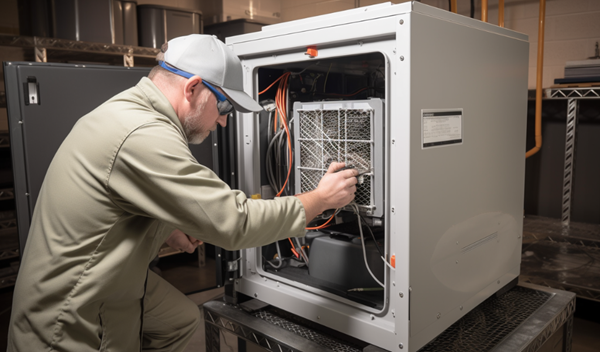


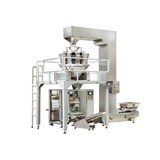
-160x160-state_article-rel-cat.png)




-160x160-state_article-rel-cat.png)





